I am trying to explain to myself the following 8085 assembly code
I have this code that asks for two numbers (from a virtual keyboard within the IDE) and displays them on LEDs 7 and 8:
.ORG 0000
CALL DATA
MOV C,A
CALL PRNT
CALL DATA
MOV E,A
CALL PRNT
MVI D,00H
MOV L,E
MVI H,00H
MOV A,C
DCR A
JUMP:
DAD D
DCR A
JNZ JUMP
MOV A,L
DAA
JMP IMPR
RET
DATA:
MVI A,00000000B
OUT 00H
IN 00H
RLC
RLC
RLC
RLC
ANI F0H
MOV B,A
MVI A,00000000B
OUT 00H
IN 00H
ANI 0FH
ORA B
RET
IMPR:
MOV B,A
ANI F0H
RLC
RLC
RLC
RLC
CALL NUMZ
OUT 06H
MOV A,B
ANI 0FH
CALL NUMZ
OUT 07H
RET
NUMZ:
CPI 00H
JNZ ONE
MVI A,01110111B
JMP EXIT
ONE:
CPI 01H
JNZ TWO
MVI A,01000100B
JMP EXIT
TWO:
CPI 02H
JNZ THREE
MVI A,00111110B
JMP EXIT
THREE:
CPI 03H
JNZ FOUR
MVI A,01101110B
JMP EXIT
FOUR:
CPI 04H
JNZ FIVE
MVI A,01001101B
JMP EXIT
FIVE:
CPI 05H
JNZ SIX
MVI A,01101011B
JMP EXIT
SIX:
CPI 06H
JNZ SEVEN
MVI A,01111011B
JMP EXIT
SEVEN:
CPI 07H
JNZ EIGHT
MVI A,01000110B
JMP EXIT
EIGHT:
CPI 08H
JNZ NINE
MVI A,01111111B
JMP EXIT
NINE:
CPI 09H
JNZ SAL
MVI A,01001111B
JMP EXIT
EXIT:
RET
I'm not including PRNT because it's not important for my question.
I understand .ORG 0000 which is the start of the program - it's like BEGIN in Pascal.
CALL DATA is a subroutine which fills the Accumulator with binary zeros and shows them (?) in port 0 (00H in hex), then it gets (from the virtual keyboard) a number and then it's rotated left in a bit shift operation.
My question is why ? What's the point in doing so ? What's the benefit ? I have read about it in Wikipedia but I still don't get it. What does it do in this code and why is it needed ?
